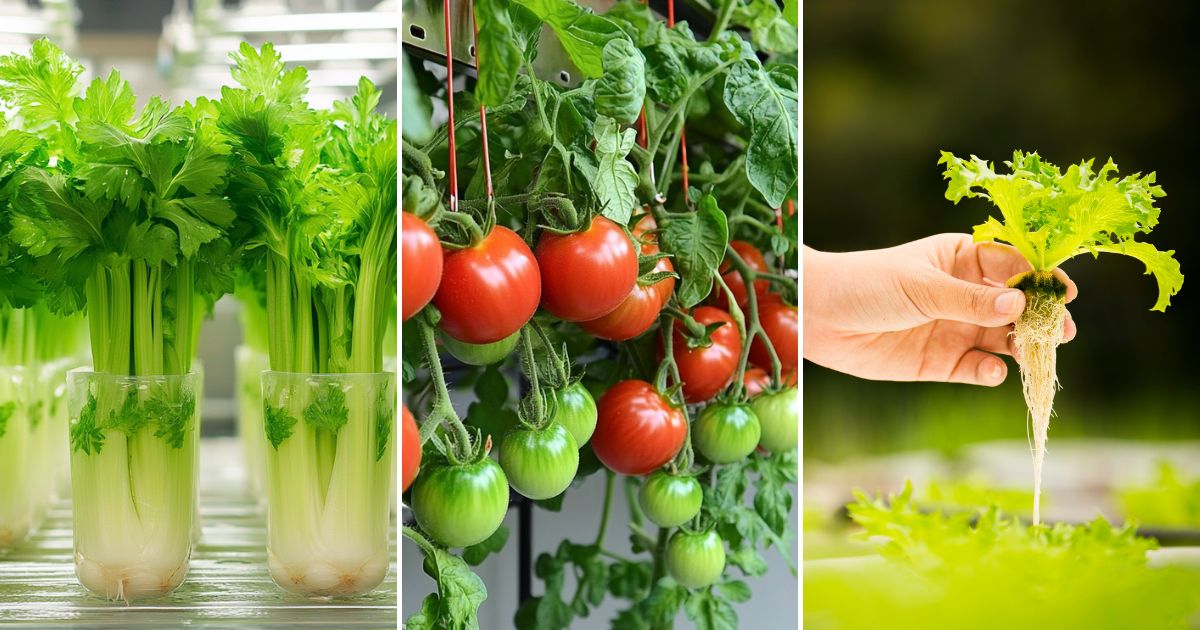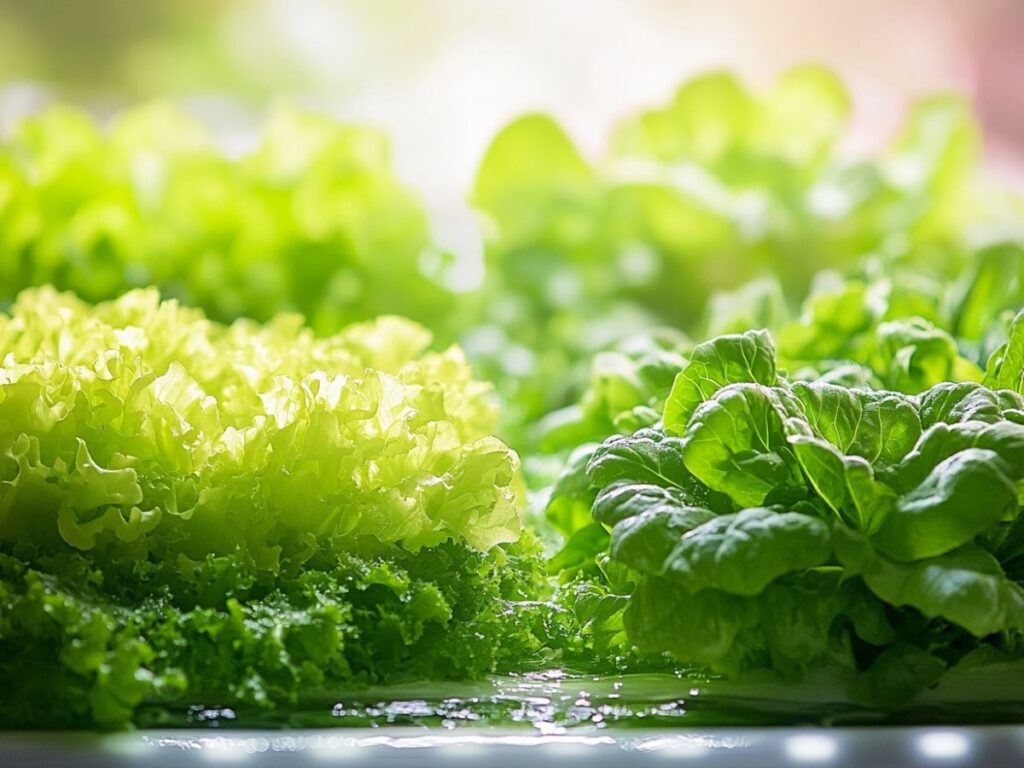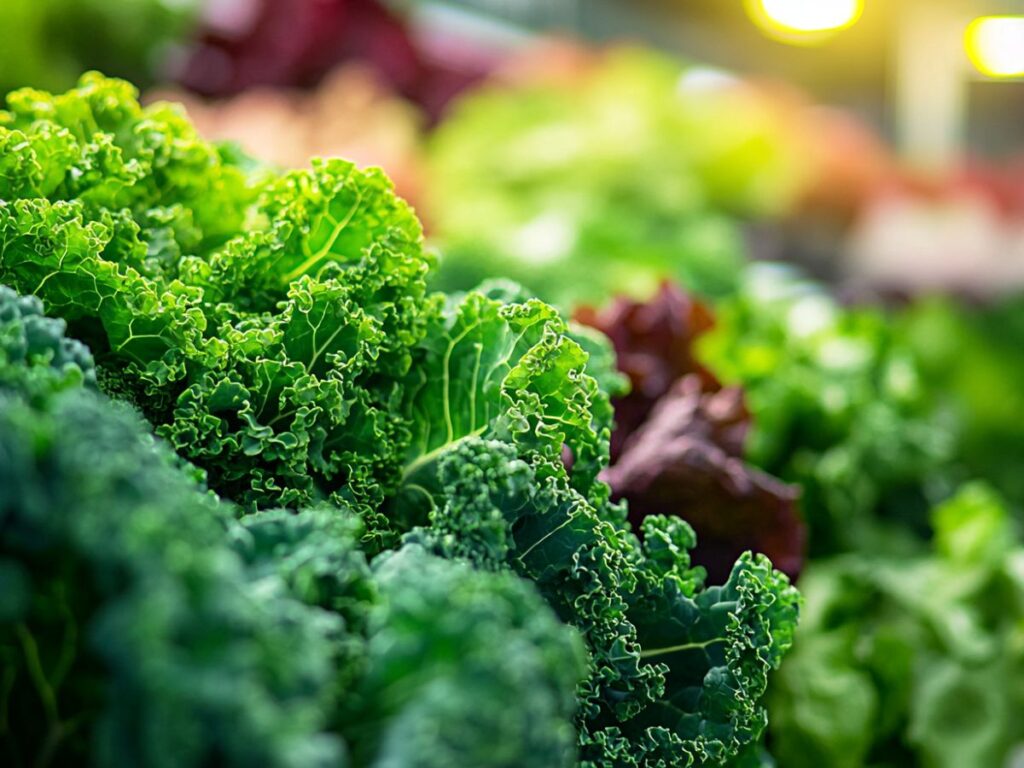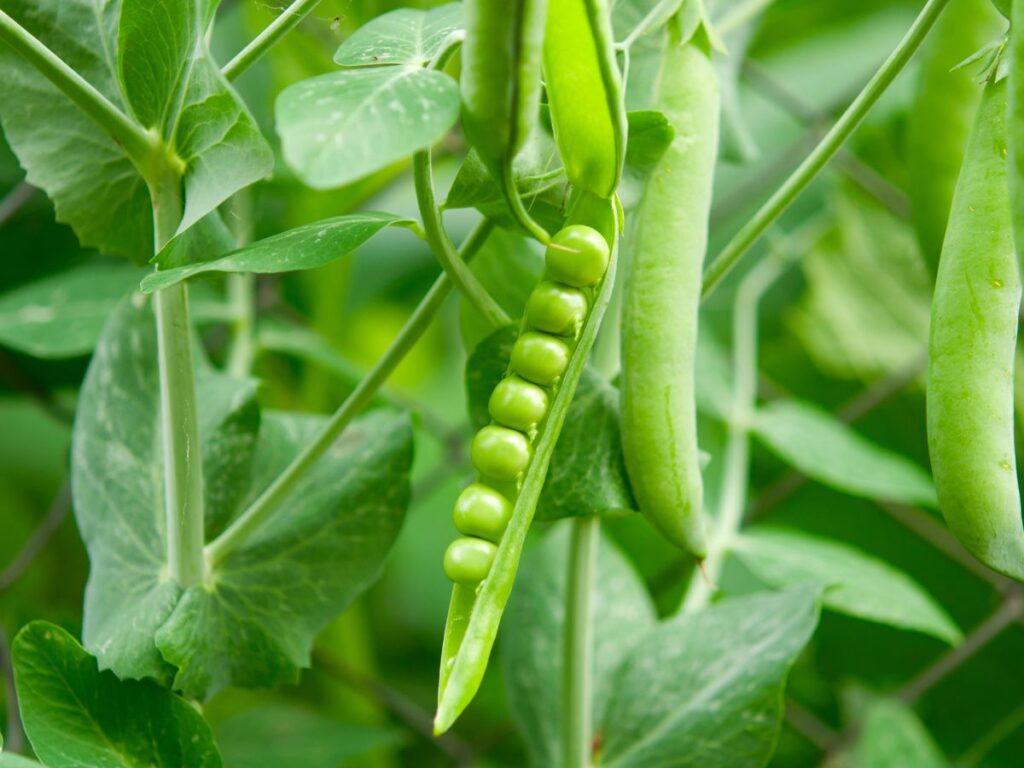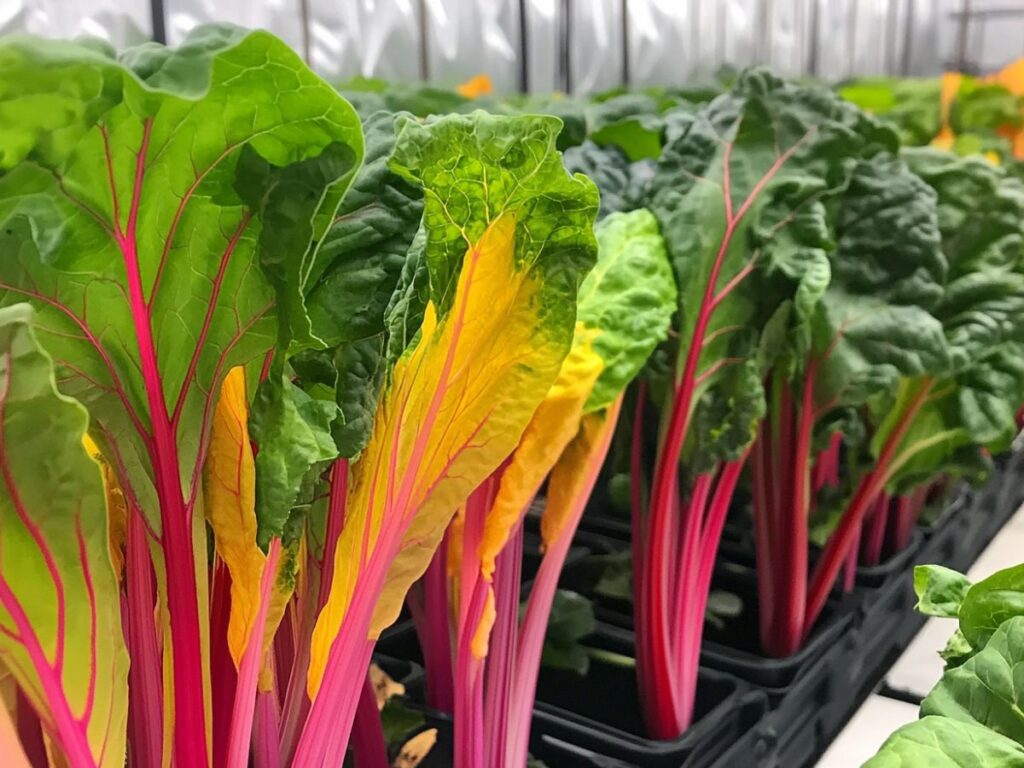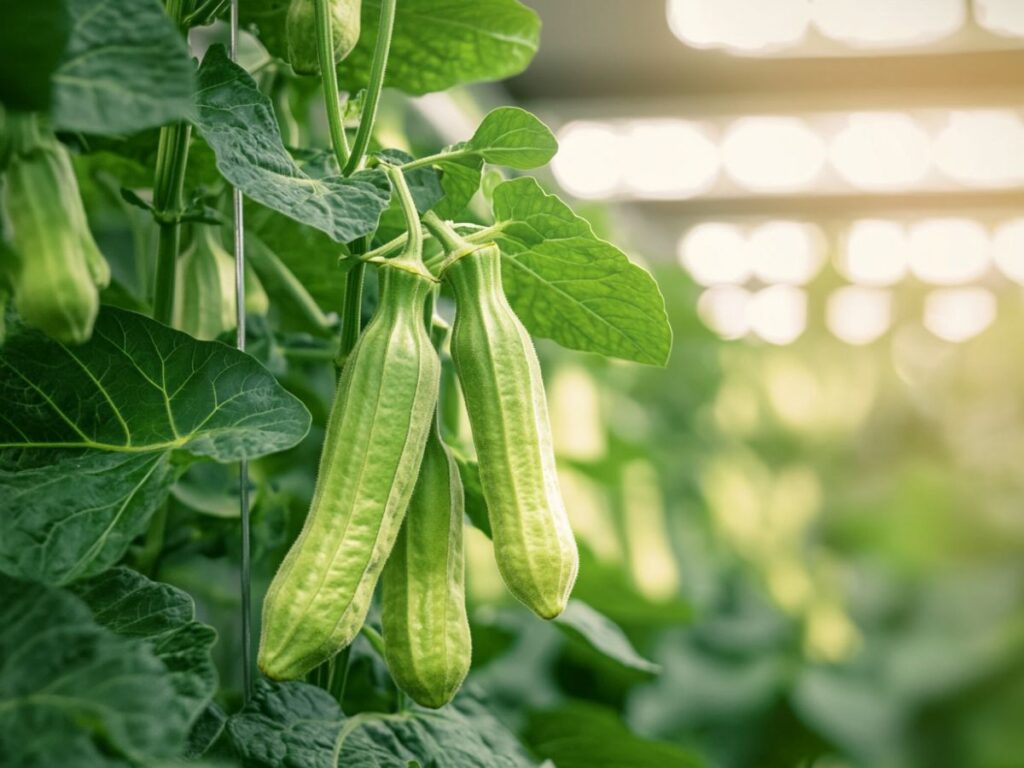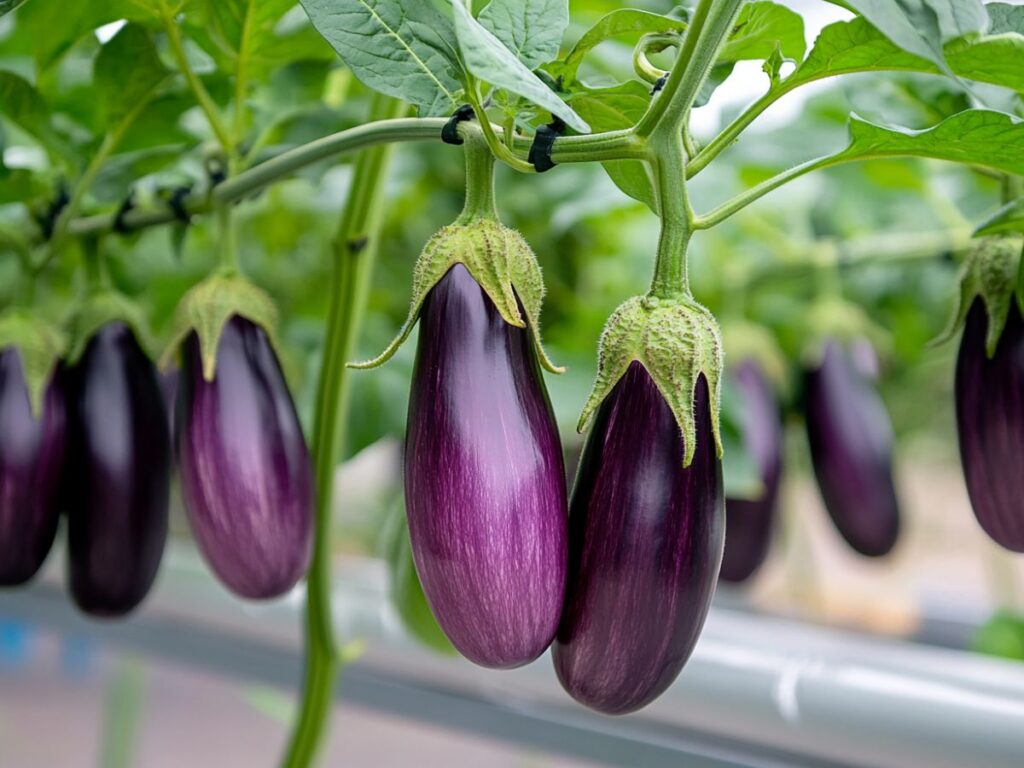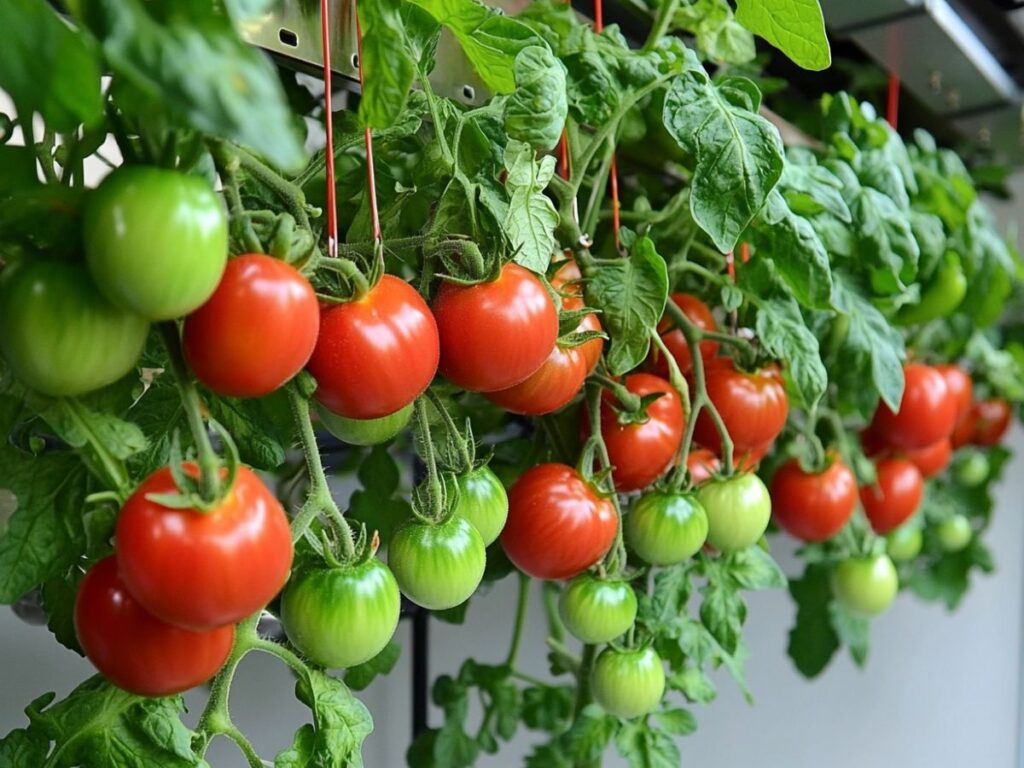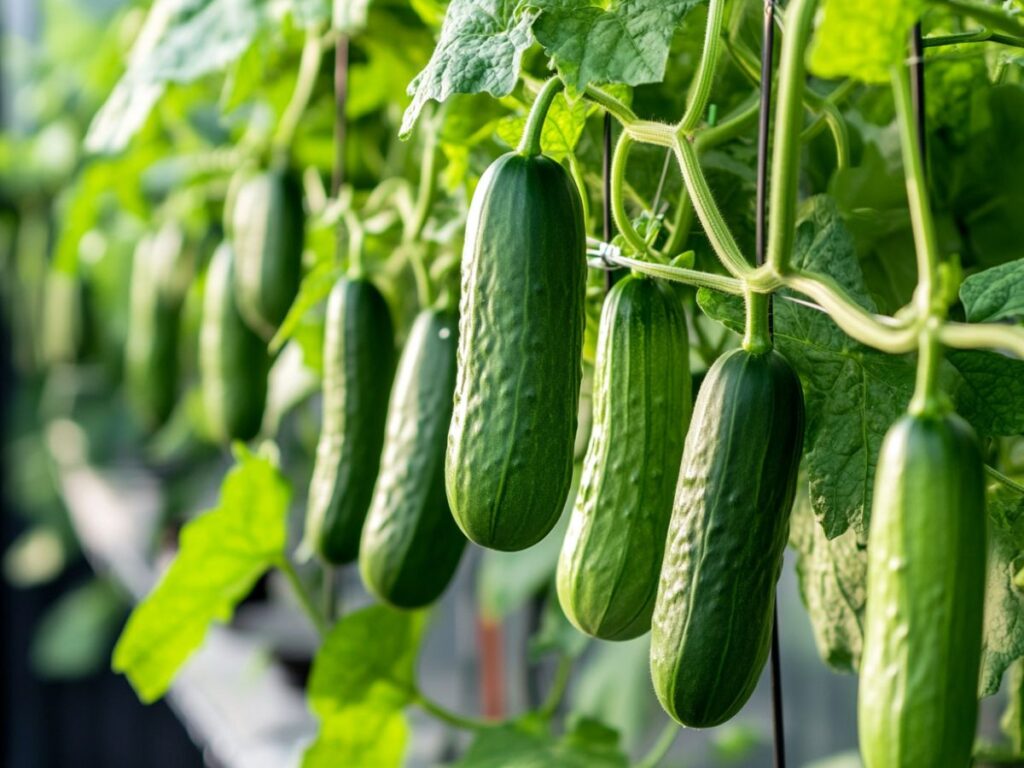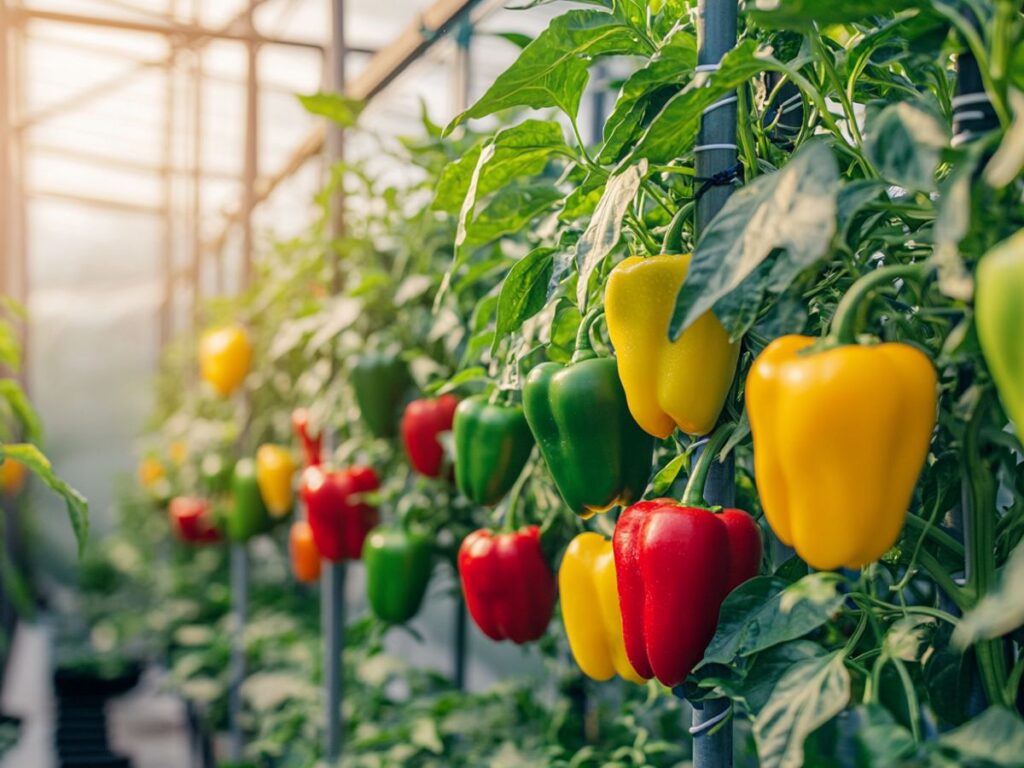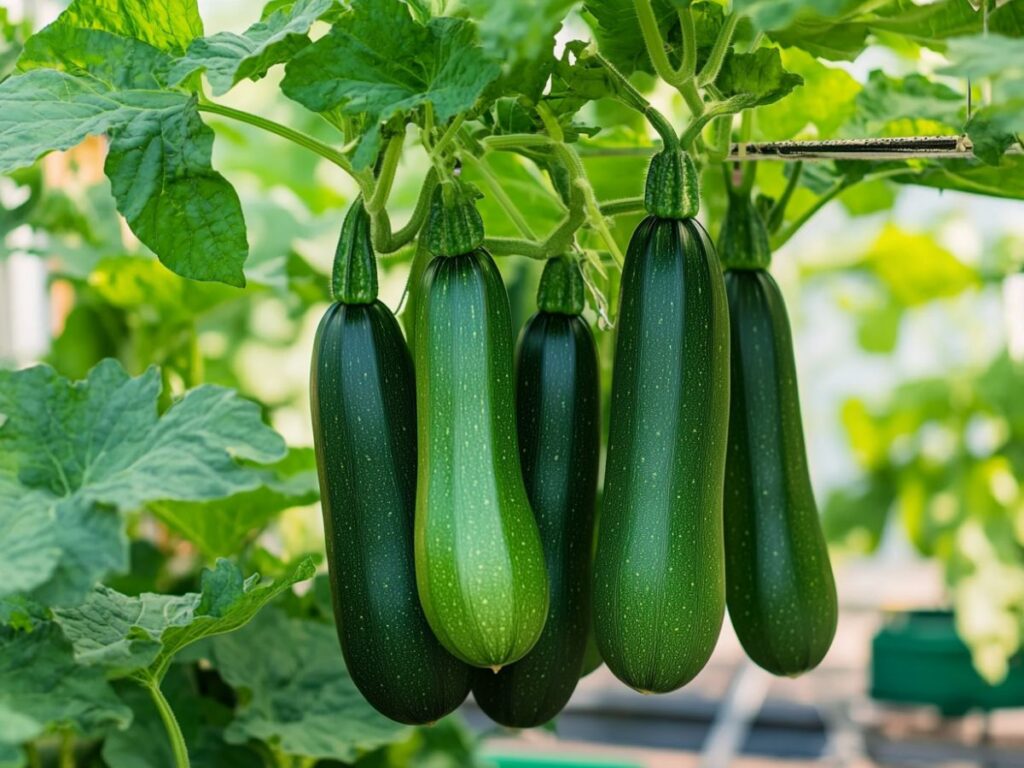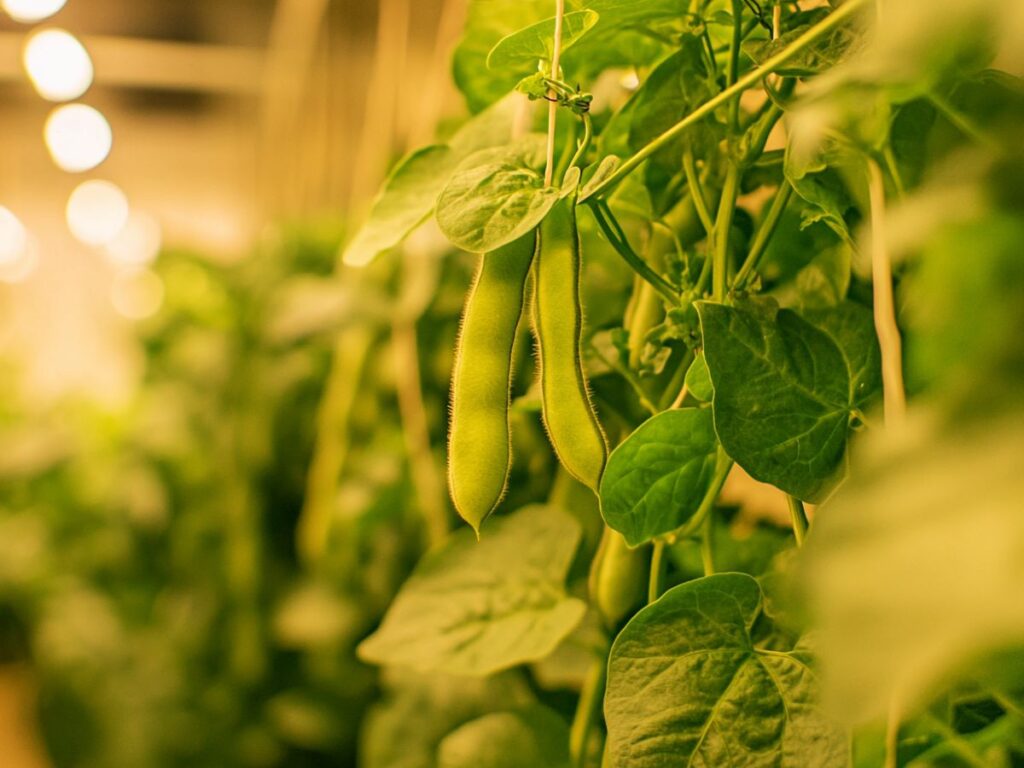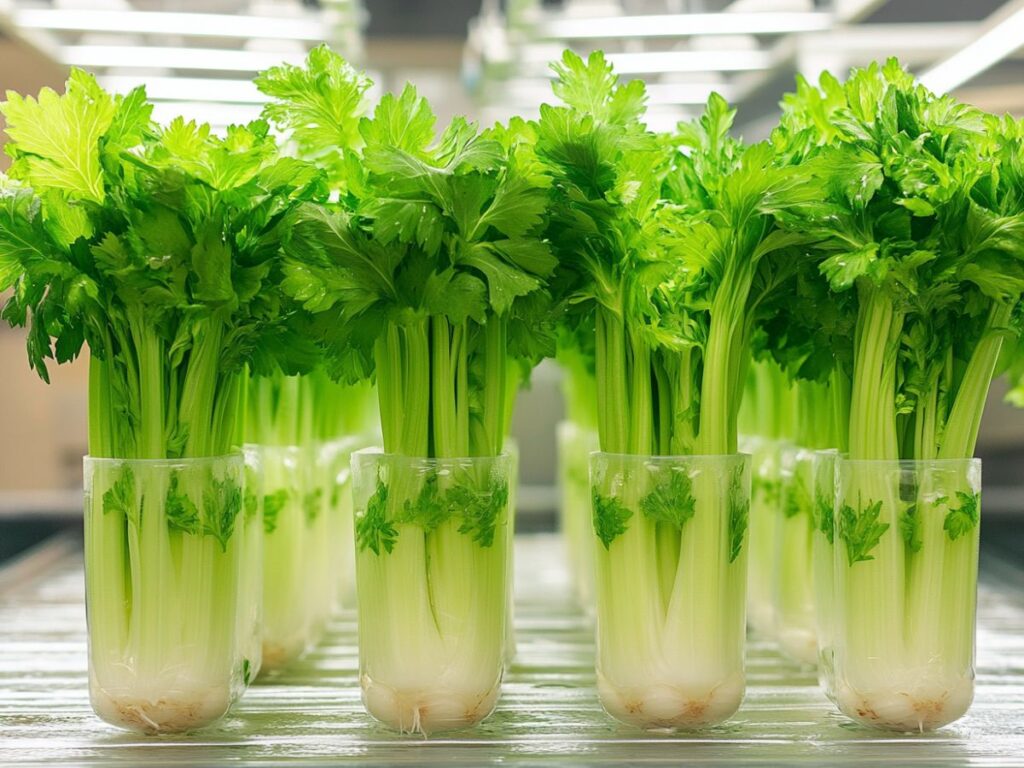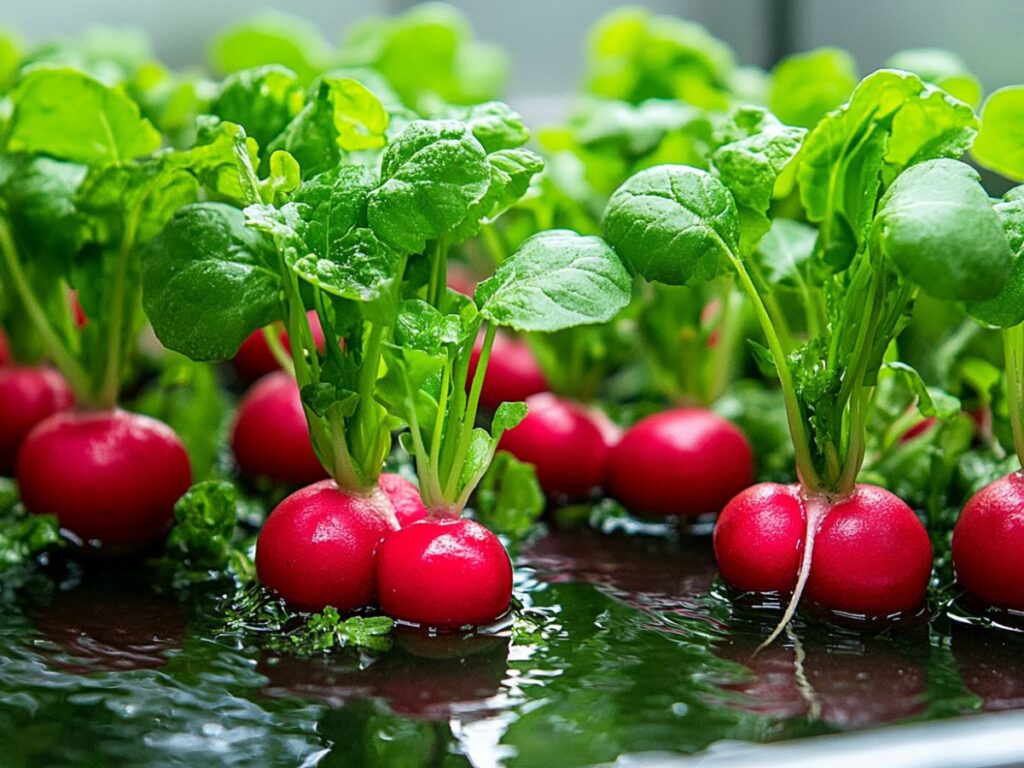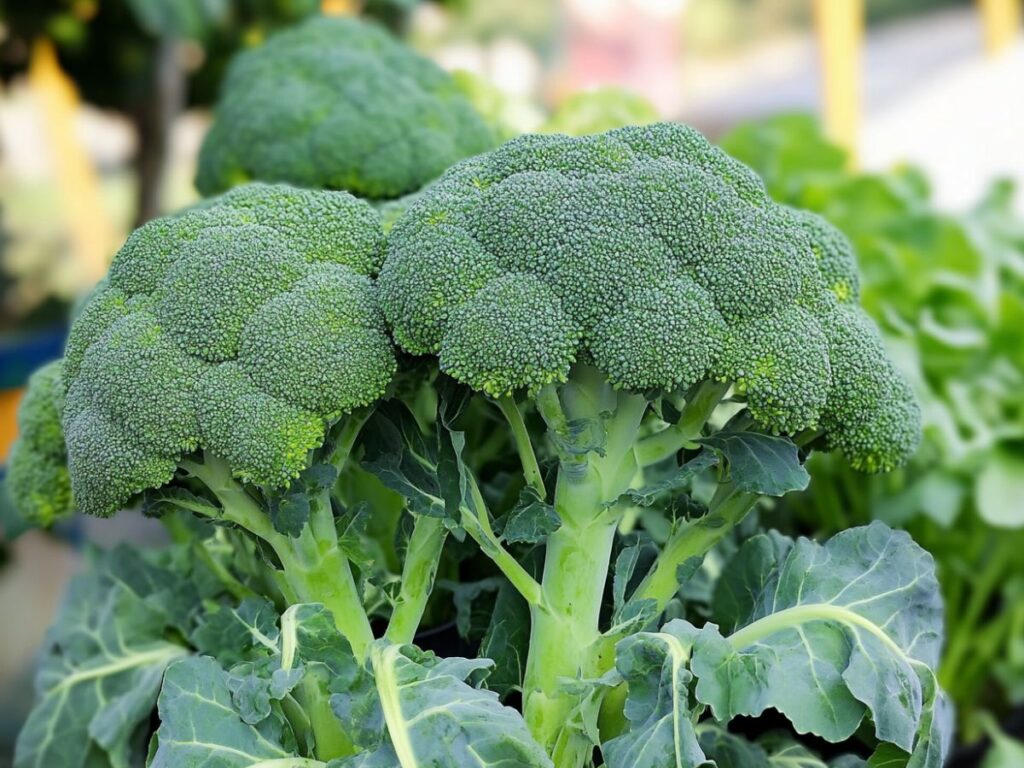Gardening has always been a labor of love, but sometimes the traditional methods come with challenges like limited space, poor soil conditions, or weather that just won’t cooperate.
Enter hydroponics: a soil-free, sustainable way to grow your favorite vegetables all year round. With just water, nutrients, and a little know-how, you can create your own indoor garden haven, even if your backyard is lacking in space or sunlight.
If you’re curious about what veggies thrive in a hydroponic setup, you’re in for a treat! Here are 17 vegetables that not only grow beautifully using this method but also offer a satisfying harvest to keep your kitchen stocked with fresh, home-grown produce.
1. Lettuce
Let’s start with the easiest and most popular vegetable for hydroponic gardening—lettuce. Lettuce loves water, making it a perfect candidate for hydroponics.
Whether you’re into crisp romaine, butterhead, or leafy greens, you can enjoy a fresh harvest in as little as four to six weeks. Bonus: You can stagger your planting for a continuous supply of salad greens!
Tip: Keep the water slightly cool, around 60-70°F, for the best growth.
2. Spinach
This nutrient-packed green does exceptionally well in hydroponic gardens. Spinach is quick to grow and thrives in cooler conditions, much like lettuce.
One of the best things about spinach is how versatile it is in the kitchen—from smoothies to soups to sautéed sides.
Hydroponic spinach prefers a pH of around 6.0 to 7.0, and it’s important to provide ample light, ideally 12 to 14 hours a day, to keep it lush and vibrant.
3. Kale
If you’re on the kale train, hydroponics will make your health-food dreams come true. Kale grows fast and produces a high yield in water-based systems. Plus, it’s a hardy vegetable, so it can tolerate minor fluctuations in temperature and light levels.
Dino kale, curly kale, and Red Russian kale all thrive hydroponically, giving you endless options for salads, stir-fries, and smoothies.
4. Arugula
This peppery green adds a delightful bite to salads and sandwiches. Arugula grows quickly, maturing in about three to four weeks, making it one of the fastest crops in your hydroponic setup.
Its shallow roots are ideal for water-based systems, and it requires minimal care, perfect for beginners!
If you love adding fresh greens to your meals, arugula’s quick turnaround will keep your kitchen stocked.
5. Peas
Peas, whether snow, snap, or shelling varieties, are another great vegetable to grow hydroponically. They love cooler temperatures and are relatively low-maintenance, making them perfect for both beginners and experienced gardeners.
Peas grow quickly, and with the help of a trellis or support system, their vines will produce an abundant harvest in no time.
Hydroponic peas prefer a pH range of 6.0 to 7.0 and do well with moderate light—around 12-14 hours a day. Whether you’re tossing fresh peas into salads, stir-fries, or soups, having them on hand from your own indoor garden is incredibly satisfying.
6. Swiss Chard
Swiss chard adds both beauty and nutrition to your hydroponic garden. Its colorful stems—ranging from red and yellow to orange and pink—make it a visual standout, and the leaves are packed with vitamins A, C, and K.
Like spinach, Swiss chard thrives in water and can be harvested continually as new leaves grow from the center.
For optimal growth, keep the water temperature between 65-75°F and maintain a pH between 6.0 and 6.5. Swiss chard also loves light, so aim for at least 14 hours of exposure each day to keep those vibrant leaves flourishing.
7. Okra
If you love southern cuisine or are just looking for a unique addition to your hydroponic garden, okra is an excellent choice.
This warm-weather vegetable produces pods that are perfect for frying, adding to gumbo, or even pickling. Okra grows well in hydroponic systems as long as it receives plenty of light—around 14-16 hours per day.
Okra thrives in a pH range of 6.0 to 6.5 and requires slightly warmer temperatures, making it a great option for indoor hydroponic gardens where you can control the environment.
The plant itself can grow tall, so be sure to provide some vertical space and support as it matures.
8. Eggplant
Eggplants might not be the first veggie that comes to mind for hydroponics, but they do incredibly well in these systems.
Compact varieties, such as Japanese eggplants or even smaller globe eggplants, are particularly suited to hydroponic setups.
These glossy, purple vegetables can be used in everything from roasted dishes to hearty casseroles, adding a rich, earthy flavor to your meals.
Eggplants need plenty of light—at least 14 to 16 hours per day—and a pH level between 5.5 and 6.5 to thrive. Like tomatoes and peppers, they may require a support system as they grow, but they’re well worth the extra care.
9. Tomatoes
Tomatoes might not be the first vegetable that comes to mind for hydroponics, but they’re actually one of the most rewarding.
While it requires a bit more attention—like plenty of light and support for the vines—the payoff is worth it. Think juicy cherry tomatoes or even larger varieties like beefsteak, all grown indoors!
Hydroponic tomatoes need a slightly acidic pH between 5.5 and 6.5, and they thrive when exposed to around 16 to 18 hours of light each day.
10. Cucumber
Crunchy, refreshing cucumbers love water, so it’s no surprise that they’re an excellent fit for hydroponic growing. Varieties like Persian or English cucumbers are particularly suited to these systems.
As long as you provide them with a trellis for support and plenty of light, cucumbers will reward you with an abundant harvest.
Make sure to keep their pH between 5.5 and 6.0 and provide a nutrient solution rich in potassium to support fruit development.
11. Peppers
Sweet or spicy, peppers are a fantastic option for hydroponics. Bell peppers, jalapeños, and even habaneros all thrive in water-based systems.
Peppers require similar care to tomatoes: lots of light, the right pH (around 5.5 to 6.5), and stable temperatures.
Because peppers can grow quite tall, they may need staking or a support system, but the payoff is fresh, crunchy peppers for your salads, salsas, and more.
12. Zucchini
Zucchini in a hydroponic system? Absolutely! Though it’s a space-hogging plant in traditional gardens, you can train zucchini to grow vertically in hydroponics, saving space while still enjoying its prolific yields.
Zucchini needs a lot of light and nutrients, but with the right setup, you can enjoy this versatile veggie all year long—think zucchini noodles, stir-fries, and grilled slices straight from your indoor garden.
13. Green Beans
Green beans are another vegetable that thrives in hydroponic environments. Their shallow roots make them well-suited for growing in water, and they mature in just a few weeks.
You’ll want to provide them with a trellis or some type of vertical support as they grow, but other than that, green beans require minimal maintenance.
Keep the pH around 6.0 to 6.5, and before you know it, you’ll be harvesting a bountiful crop.
14. Beets
Beets are a root vegetable that does surprisingly well in hydroponic setups, provided you give them enough room for the roots to expand. While you might be familiar with their deep red roots, the greens are also edible and packed with nutrients.
Beets prefer a slightly acidic pH of 6.0 to 6.5 and require a nutrient solution rich in phosphorus to help support root growth.
15. Celery
Celery may seem tricky, but hydroponics makes it easier than you think. Its shallow roots make it a great candidate for water-based systems, and you can grow crisp, flavorful stalks right from your indoor garden.
Hydroponic celery tends to be more tender and less stringy than soil-grown varieties, making it perfect for fresh snacking or adding to soups and salads.
Celery thrives in a pH range of 5.5 to 6.5 and does well with moderate light exposure, around 12 hours per day. Be patient, as celery takes a little longer to mature, but once it’s ready, you’ll have a steady supply of fresh, crunchy stalks.
16. Radishes
Radishes are perfect for impatient gardeners—they grow incredibly fast! In as little as three weeks, you can harvest crunchy, peppery radishes from your hydroponic setup.
Like carrots, radishes need a bit more root space than leafy greens but are otherwise low-maintenance and easy to grow.
Their preferred pH range is between 6.0 and 7.0, and they benefit from good light exposure—around 12-14 hours a day.
17. Broccoli
Broccoli is a cool-weather crop, but with hydroponics, you can grow it year-round in a controlled environment. It takes a bit longer to mature than some other vegetables, but the reward of fresh, home-grown broccoli is well worth the wait.
Broccoli needs ample light and a pH between 6.0 and 6.5. Make sure to provide it with plenty of nutrients, particularly calcium and magnesium, to support strong growth and head formation.
With these 17 vegetables, you can fill your kitchen with fresh, flavorful produce no matter the season or your outdoor gardening situation.
Hydroponics offers a sustainable, space-saving way to enjoy a wide variety of vegetables, from leafy greens to crunchy peppers, and everything in between.
It’s a wonderful opportunity to connect with your food in a whole new way, while also reducing waste and gaining a deeper appreciation for the growing process.
Plus, there’s nothing quite like the satisfaction of harvesting your own veggies right from your living room!
